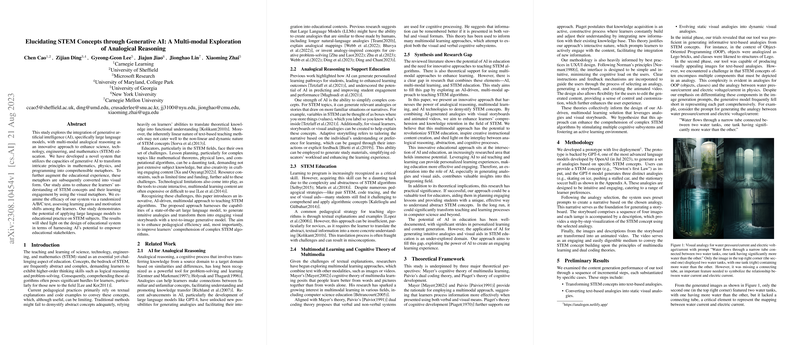Introduction to Generative AI in STEM Education
Generative AI has made significant strides in various domains, offering innovative solutions to traditional challenges. One such domain is education, particularly in the fields of Science, Technology, Engineering, and Mathematics (STEM). Bringing the power of AI into the classroom offers a potential shift in how complex STEM concepts are taught and understood.
Bridging Concepts and Comprehension
The conventional method of teaching STEM subjects leans heavily on textual explanations accompanied by code examples or descriptive illustrations. However, this often does not suffice for effective learning. Many students struggle with abstract concepts that are the haLLMark of subjects like physics and mathematics. Generative AI offers an opportunity to overcome these hurdles by transforming esoteric principles into accessible metaphors and narratives. By doing so, learners can more readily grasp and internalize otherwise challenging materials.
A novel system has been developed that utilizes generative AI to convert intricate STEM principles into comprehensible metaphors. These metaphors are then transformed into visual aids, such as storyboards and animated videos, making the learning experience more engaging.
Evaluating the Educational Impact
A critical step in validating the efficacy of this new system is empirical testing, which involves randomized experiments to compare learning gains and shifts in student motivation. By assessing these metrics, one can determine if generative AI truly enhances STEM education, making it more relatable and less intimidating for learners.
The pilot paper for this tool includes a three-step process that starts with generating text-based analogies from STEM concepts. These are then converted into static visuals, and later on, into dynamic visual analogies. This progression aims at progressively more engaging and effective ways to convey complex information.
Potential and Challenges
While the preliminary results of the AI system's content generation are promising, they underscore that its ultimate test will lie in real-world classroom applications. The paper's next phase aims to examine the system's impact on actual learning outcomes and student engagement across various STEM subjects and learner profiles.
These findings suggest that generative AI could potentially revolutionize STEM education by making learning more immersive and personalized. However, further empirical studies are needed to understand its full impact and the patterns of engagement it incites among learners. If successful, this approach could significantly enrich teaching methodologies and transform how students interact with abstract STEM algorithms.
